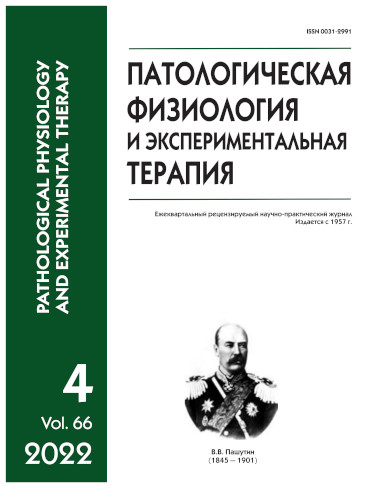DNA methylation in regulation of the apoptosis gene expression in non-small cell lung cancer
Abstract
Background. Lung cancer is the most common malignant neoplasm worldwide: in 2020 more than 2.2 million new cases and more than 1.7 million cases with a high frequency of adverse outcome were diagnosed. Non-small cell lung cancer (NSCLC) accounts for approximately 85% of all lung cancers. An important role in the pathogenesis of this type of cancer is played by aberrant methylation of CpG islands of promoter regions in apoptosis-related genes. Previous studies have reported hypermethylation of the DAPK1, APAF1, and BCL2 genes in some types of tumors, but reports of the role of methylation of these genes in the progression of NSCLC are scarce. The role of the promoter CpG islands methylation in the regulation of BIM, BAX gene activity and in the pathogenesis of NSCLC has not yet been clarified. Aim. To study changes in the expression and methylation levels of apoptosis-related genes in NSCLC. Methods. Samples of NSCLC tumors were collected and clinically characterized at the Blokhin Research Institute of Clinical Oncology. High-molecular DNA was isolated from the tissue by the standard method. The methylation level was analyzed using bisulfite DNA conversion and quantitative methylation-specific PCR (MS-PCR) with real-time detection. The expression level was measured by real-time PCR using the intercalating dye SYBR-Green I. The nonparametric Mann-Whitney criterion for independent samples was used to assess the significance of differences between the study groups. Results. Real-time PCR detected a significant (p<0.05) increase in the methylation level of the BAX, DAPK1, and BIM genes and a decrease in the BCL2 gene in tumor samples compared to matched, histologically normal lung tissue. In the studied primary tumors, the methylation levels of the BAX, BIM and BCL2 genes were significantly associated with respective expression levels in patients with NSCLC. For the first time, this study demonstrated an increased methylation level of the BAX gene with a simultaneous decrease in its expression in tumor samples in the presence of lymph node metastases compared to tumor samples without metastases (p=0.033, FDR=0.05 and p<0.01, FDR=0.05, respectively). Conclusion. Thus, the discovered new patterns are of interest for understanding the mechanisms of NSCLC development, can form a basis for diagnosis and prognosis of the course of this disease, and also help adjusting the management considering the pathophysiological features of the tumor.






